This year’s Mother Earth Day, themed “Invest in Our Planet”, encourages people to engage in activities that conserve the environment. In this interview with TheCable’s DEBORAH BODUNDE, Ahmed Akinrinola, a Nigerian artist who transforms plastic waste into art, wants people to see possibilities in waste materials and think of creative and sustainable ways to repurpose them.
TheCable: Tell us about your background and how you became interested in recycling plastic materials?
Akinrinola: I’m from Ogun state but I was born and raised in Lagos. I attended Yaba College of Technology where I obtained my national diploma in general arts and majored in sculpture for my Higher National Diploma. My dad is a tailor and my late mom was a caterer.
I grew up spending a lot of time around my parents because of their kind of work. I had to work with my hands because, in my family, no one had a white-collar job and this actually influenced my decision to study art. I’ve always loved creating things with my hands and I wanted to do something that would push me to keep creating and bringing my ideas to life. I also consumed a lot of creative content online to help my own creativity.
Advertisement
After a while, I realised that most of the materials used in creating art are imported and very expensive. So, I began to research materials available in Nigeria that I can always use that won’t cost me so much money. I found out that I could create something out of disposed materials.
During my secondary school days, I was called a hoarder because if I see something that still looks nice being disposed as waste, I will keep it and repurpose it. I always see potential in everything, even things that others consider to have no use. It didn’t really make sense to my parents why I was picking a lot of things that people threw away. Well, I considered them still useful and it was a thing of joy for me to pick something from the waste bin and later find a use for it.
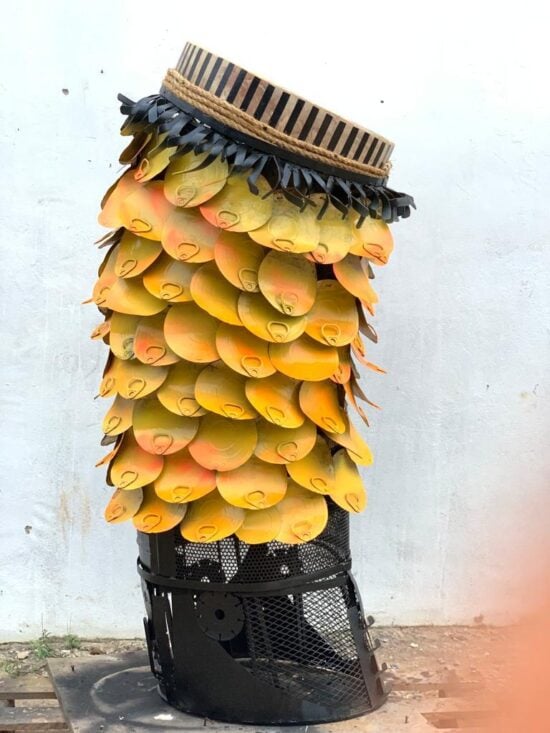
TheCable: How do you process the plastic waste you transform into art?
Advertisement
Akinrinola: When I source these things, they are usually dirty; so I put them together and wash them. I look out for the ones that can be useful and I take out the ones that are totally damaged. I can cut the damaged ones into stripes depending on what I want to create. I could use them as embellishments. I could also spray them into other colors to make them aesthetically pleasing. I could cut them into different shapes and sizes and I staple them or bind them together.
It all depends on the kind of piece I want to create, but I must wash them, clean them up and make them look really presentable.
TheCable: How are you investing in the planet through the work that you do?
Akinrinola: Apart from using plastic waste, I also use metal because I realised that metals become rusty and destroy a lot of things in the process.
Advertisement
I also create wares from clays and terracotta. In my own simple way, I’ve been using the waste and disposed items that could probably destroy the ecosystem to recreate artworks that are reusable and durable.
I give these items that people consider to no longer be of use a second chance rather than leave them to cause more damage to our environment.
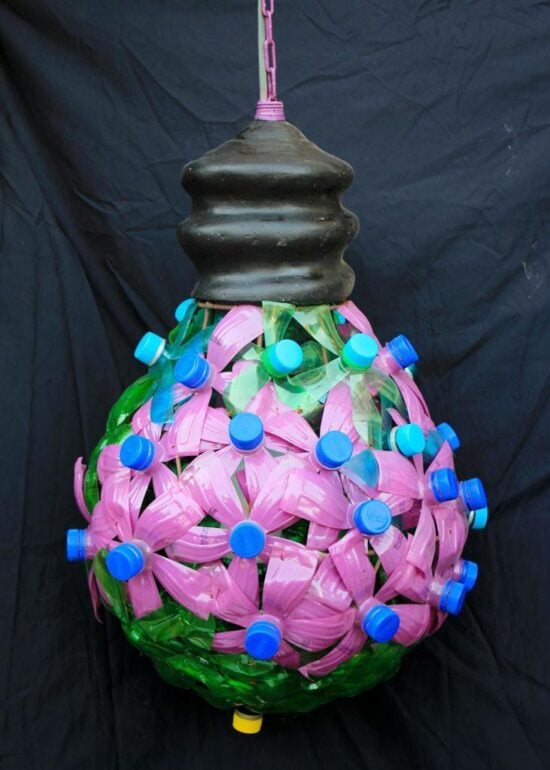
TheCable: How do you hope your art will inspire others to reduce their plastic consumption and recycle more?
Akinrinola: The materials used in making my artworks are obvious to the eyes. Anyone who is interested in something similar can be inspired by my work to create their own. People can also be inspired to read and research more and then create based on their knowledge.
Advertisement
Through my artworks, I encourage people to see possibilities in waste products. I also think paper is a better alternative. We should do more with paper as opposed to plastic. Paper is made from wood and when it decomposes, it adds to the manure of the soil.
Using paper doesn’t mean we need to cut down more trees. We would simply be using parts of trees and even tree barks regenerate over time.
Advertisement
TheCable: What role can governments and businesses play in investing in the planet and reducing plastic waste pollution?
Akinrinola: I think it is important for the government to include policies that serve nature.
Advertisement
For example, there should be policies enforcing that a tree is planted in every house. People should be encouraged to grow trees, be involved in gardening and even own a farm, no matter how small. A lot more awareness should be created around tree planting so that it can become part of our culture.
The government can also heavily tax companies using plastic because of the havoc their operations are causing to the environment. Doing this may inspire these companies to find alternative ways rather than using plastic.
Advertisement
We don’t have a proper drainage system and the ones we have are constantly filled up with plastic waste when it rains. Unless we pack them up and repurpose them, they would keep blocking one thing or the other and degenerate the ecosystem.
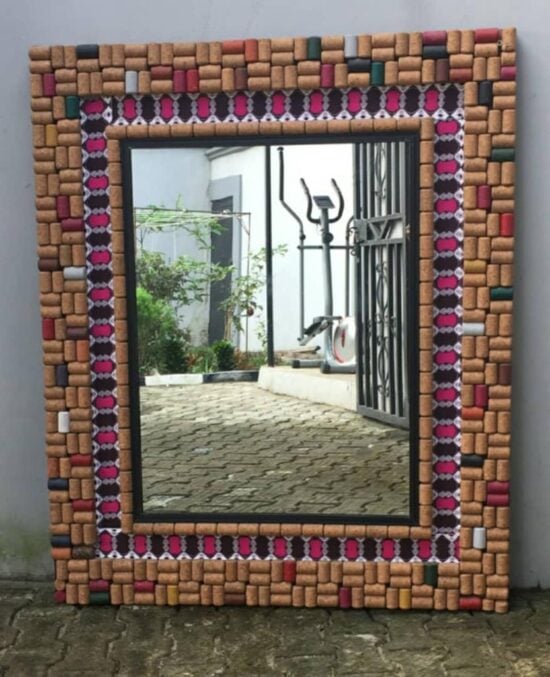
TheCable: What are some of the challenges you face when working with recycled plastic materials?
Akinrinola: One of the major challenges of creating art from plastic is that a lot of people don’t tend to buy the idea that it can be a decorative piece in their space. They look down on the process and hard work that goes into creating it, and instead want to have it for free.
Creating these pieces is time-consuming and requires other resources apart from plastic to look presentable. Some family members and friends also occasionally tell me that I am wasting my time and that I could be doing better things with my life. This usually makes me emotional and it can be mentally draining to hear people call you a roadside waste picker and that the only difference is that I’m educated.
So, there is a lot of work to be done in enlightening people about the sustainability of the planet and ways to keep it safe.
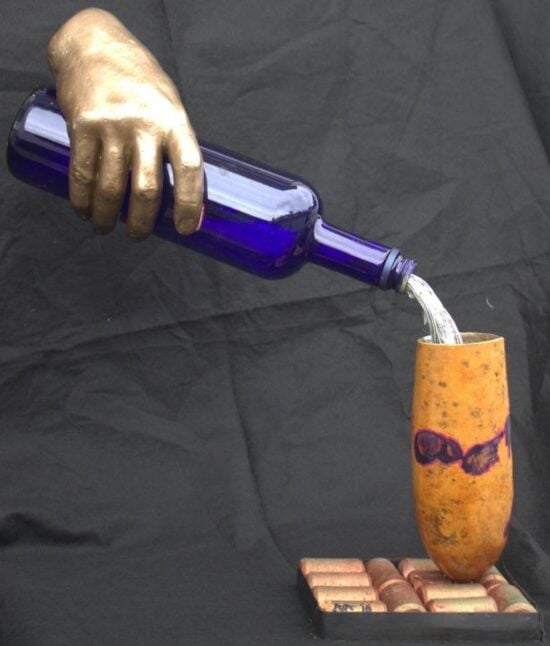
TheCable: What do you think needs to be done on a larger scale to address the issue of plastic waste and pollution?
Akinrinola: Globally, I think there’s a need to totally end the use of plastic. Companies that are in need of it will get creative and come up with alternatives. There are better alternatives to plastics. They should abolish it completely. Humans would eventually come up with ideas that will replace plastic.
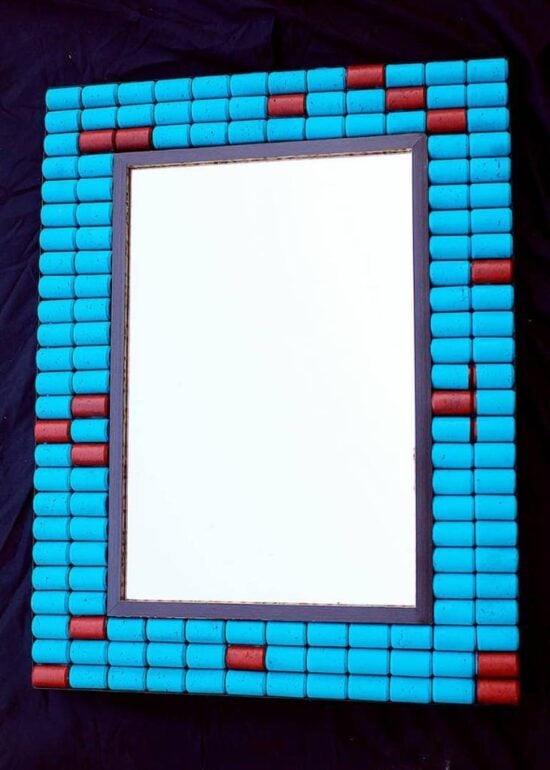
TheCable: How can people support your work and contribute to reducing plastic wastes in their communities?
Akinrinola: NGOs and individuals concerned can organise community workshops to enlighten people on how to repurpose their plastic waste. They can invite artists like myself to share knowledge on how to reuse these things.
People should also appreciate the waste to art items by supporting the artists working with them. There are quite a number of artists that are doing this but because there’s no monetary support, they take a step back from it to find other means to fend for themselves.
Apart from using plastic waste, there are other materials to be bought and used to make sure the pieces are durable and presentable enough to fit in any space. Also, people should make the effort to involve environmental artists in their architectural projects and structure design. Governments, companies, and individuals can invite environmental artists to create art pieces and launch projects to promote environmental sustainability.
Add a comment






